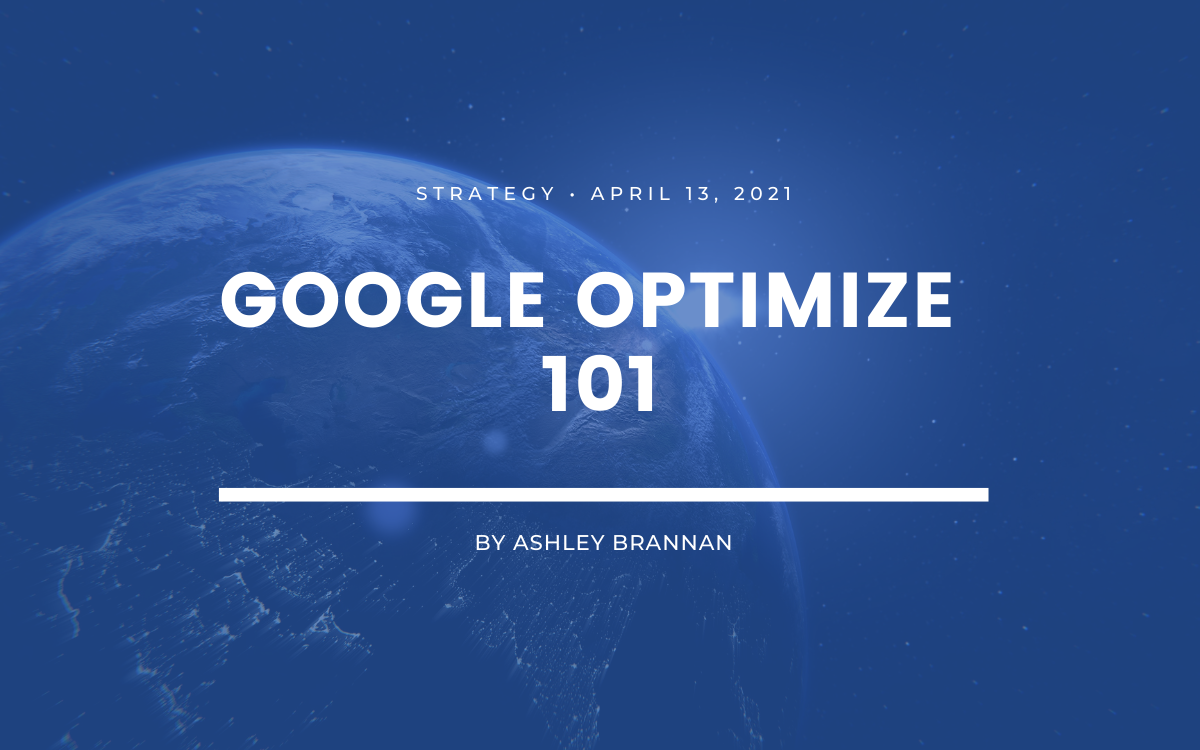Google Optimize 101
3 min to read ✭ In this post, you'll learn about how to utilize the free Google Conversion Rate Optimization platform for your organization's website.
What is Google Optimize?
As marketers, it’s important to ensure that websites are designed in a way that encourages users to engage with elements on site. Whether the goal is to increase ticket sales, newsletter sign-ups, or any other high-impact initiative, the design and language on landing pages can greatly affect the user conversion rate. The biggest question is how to determine which elements perform the best.
Luckily, Google offers a free conversion rate optimization (CRO) platform, Google Optimize, that runs in-depth landing page tests and creates custom reports to understand the results. Google Optimize is a great tool to begin testing elements on landing pages for many reasons. It is easy to set up on websites because it links directly to Google Analytics and Google Tag Manager accounts. Once Optimize is implemented, you can run comprehensive tests to targeted audiences to develop and personalize the user experience on any site.
Google Optimize Tests
Google Optimize utilizes A/B tests, Multivariate tests, and redirect tests to assist marketers in determining the most successful landing page experiences. Optimize will run these tests and measure goals that are created in Google Analytics in order to determine which variations are the most successful.
A/B Tests
A/B tests are used to test two variations of an element on a landing page. This type of test can be a great start in understanding user behavior. Some impactful A/B tests could be adjusting the language on donation buttons or testing out different images. A/B tests are relatively simple, but leave marketers with meaningful data.
Multivariate Tests
Multivariate tests allow marketers to test multiple elements on a landing page, and see what combination of variations leads to the most successful conversion rate. These tests can take a longer amount of time than A/B tests because there are more combinations to observe, but can lead to many insights about multiple elements.
Redirect Tests
Redirect tests separate pages against one another to determine the best landing page for conversion rate.
Understanding Google Optimize Results
Experiments on Google Optimize can give meaningful information about user behavior, and because the tool is linked to Google Analytics, the results can be analyzed using the different filters that Analytics has to offer. Every user from Optimize is sent to Analytics with an Experiment Name, Experiment ID, and Variant number automatically attached. This means that you can get much more creative with how you analyze your test data outside of the Optimize reports.
Even though marketers can put great amounts of research into designing these experiments, inevitably some hypotheses will not be proven true. With the Analytics integration, marketers can further analyze the results to pull meaningful user behavior data from each experiment.
Implementation of Google Optimize Results
After analyzing the data, marketers have the opportunity to adjust their website layout based on the results. Google Optimize has great personalization settings that allow marketers to personalize the website experiences based on the user. For example, if men and women had different conversion rates across different landing page variations, Google Optimize could personalize the landing pages and send men and women to different landing pages.
The integration with Google Tag Manager and Google Analytics makes Google Optimize an incredibly helpful tool for all marketers looking to increase their CRO strategy.





